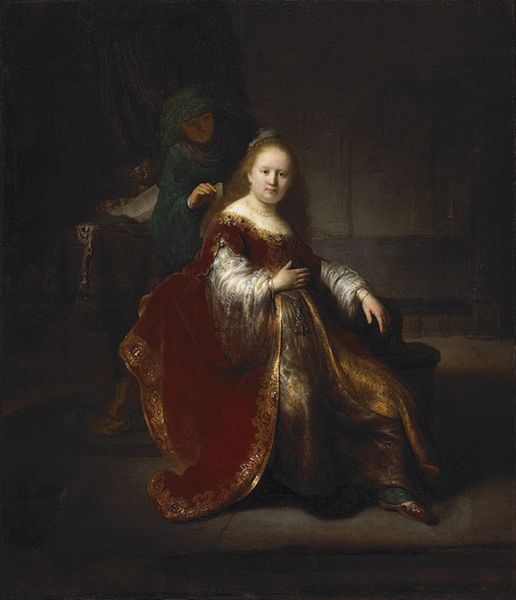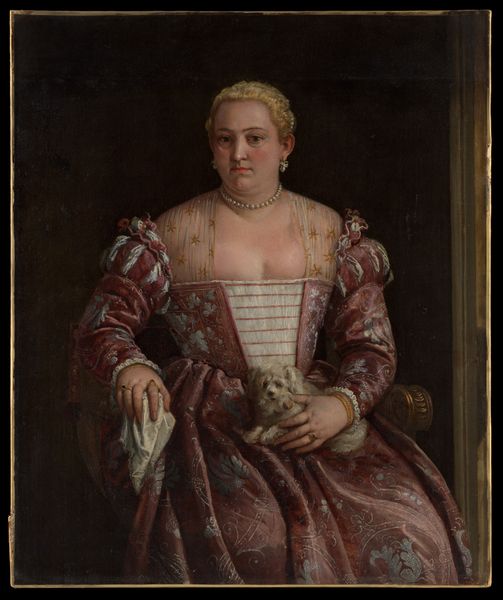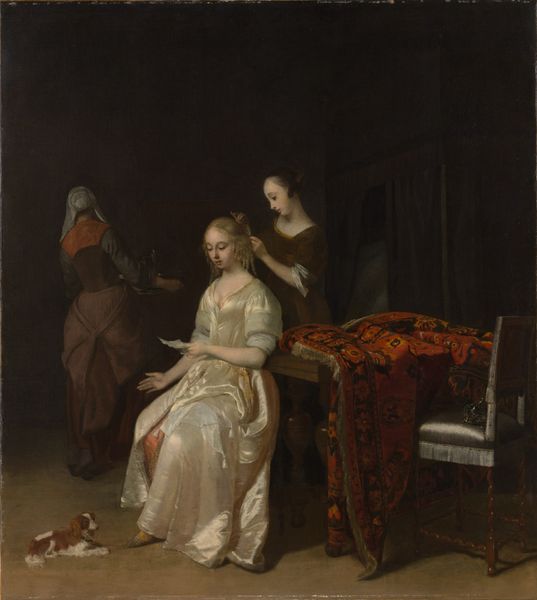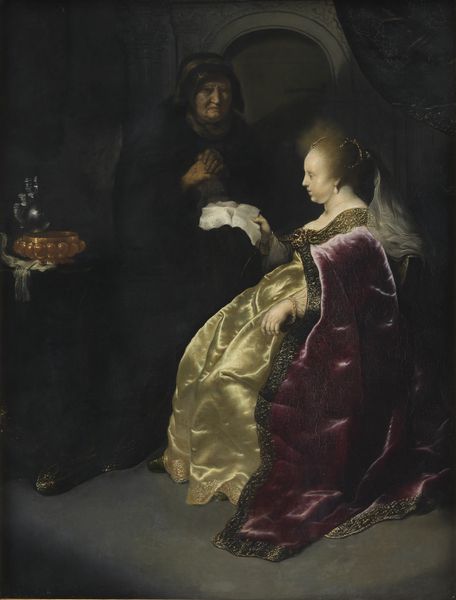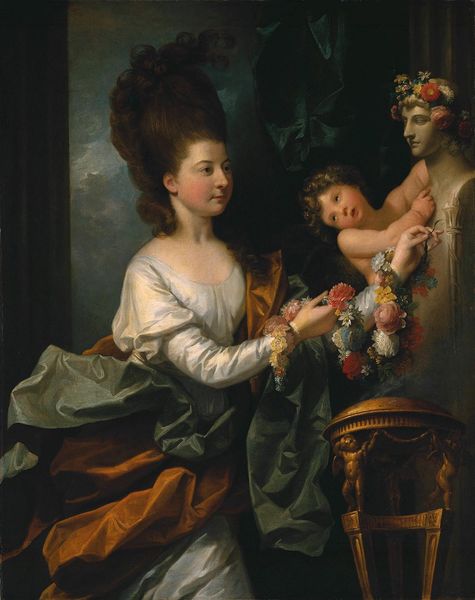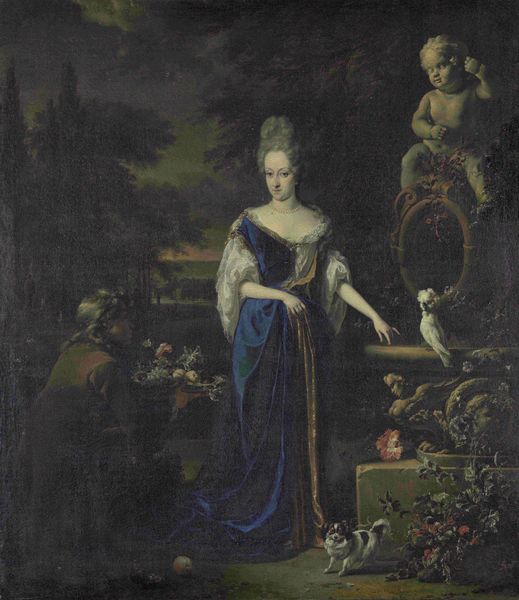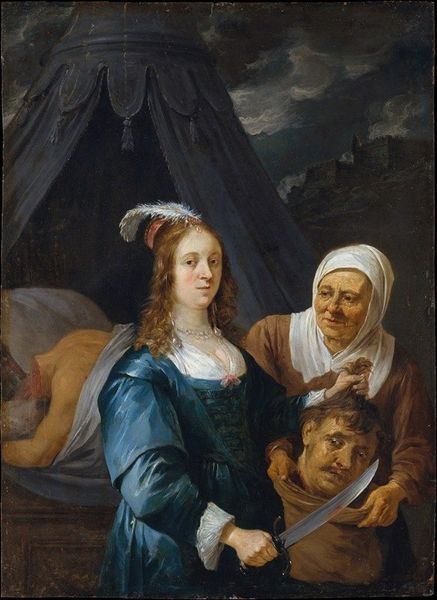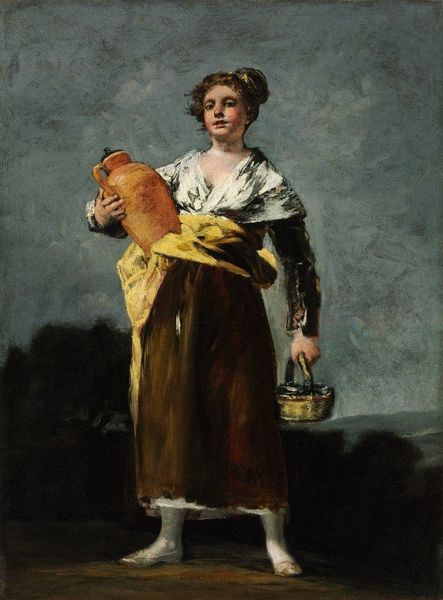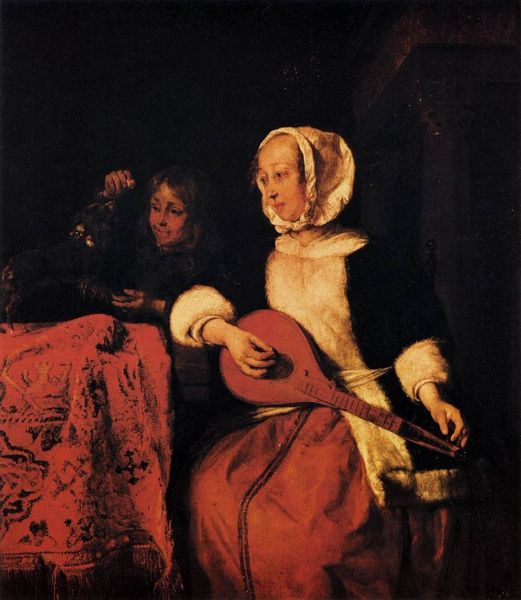
painting, oil-paint
#
portrait
#
allegory
#
baroque
#
painting
#
oil-paint
#
oil painting
#
vanitas
#
portrait art
Dimensions: height 36 cm, width 28 cm, depth 7.4 cm
Copyright: Rijks Museum: Open Domain
Willem van Mieris painted this oil on panel, Allegory of Transience, sometime in the late 17th or early 18th century. It’s a classic example of the Dutch vanitas tradition, reminding us of life’s fleeting nature. The woman, adorned in fine clothes, sits beside symbols of mortality: a skull, an hourglass, and fading flowers. Made in Leiden, this painting reflects the cultural values of the Dutch Republic during its Golden Age, which was a period of economic prosperity and artistic innovation. But beneath the surface of wealth and achievement, anxieties about mortality and the transience of earthly pleasures were common themes in art and literature. Van Mieris, like other Leiden painters, likely belonged to the Guild of Saint Luke. Guilds played a significant role in regulating artistic production, controlling quality, and providing training. Understanding the historical context of this painting requires a look at the cultural values, economic conditions, and institutional structures that shaped its creation. Only then can we begin to appreciate its full meaning and significance.
Comments
No comments
Be the first to comment and join the conversation on the ultimate creative platform.



